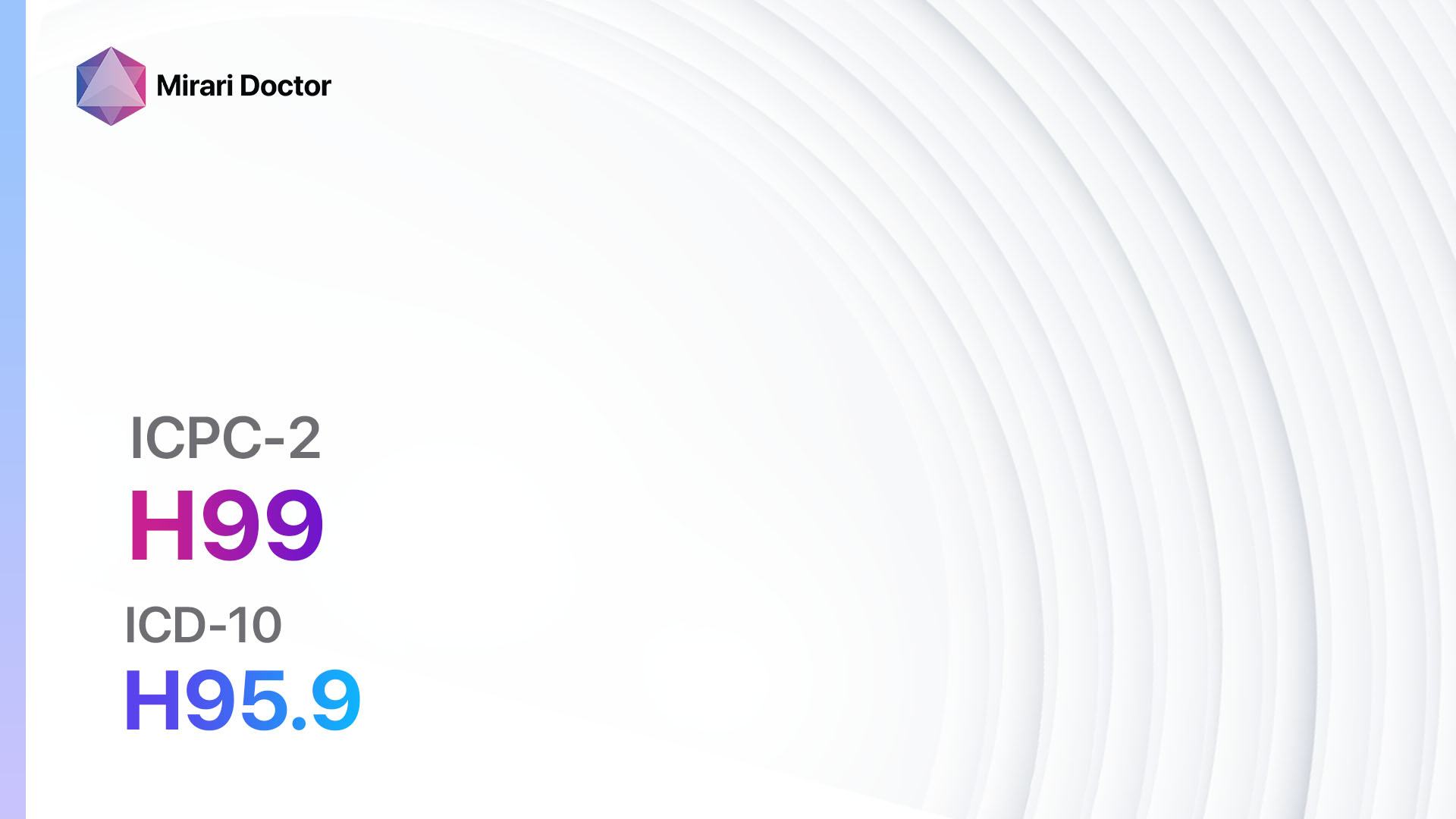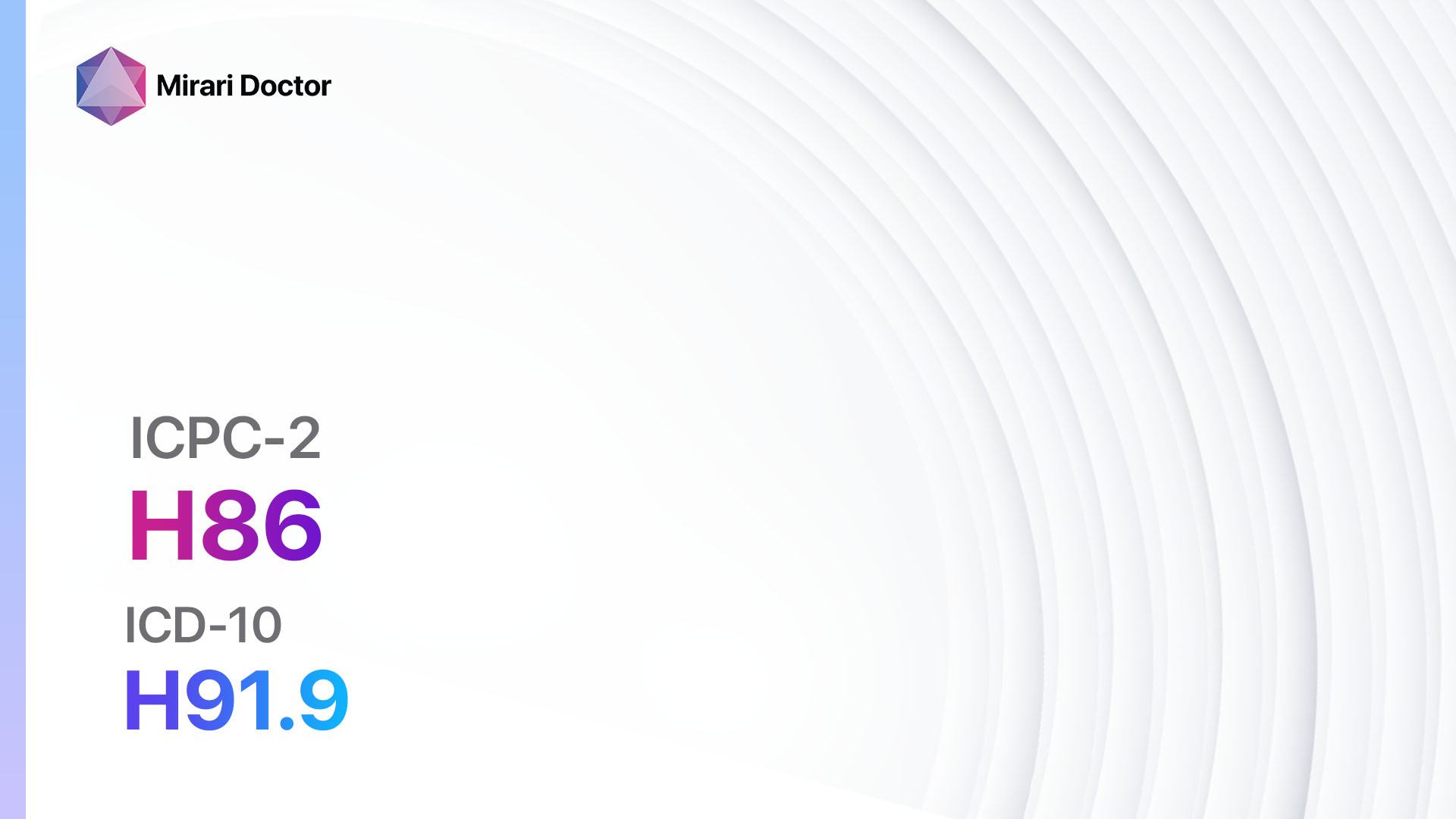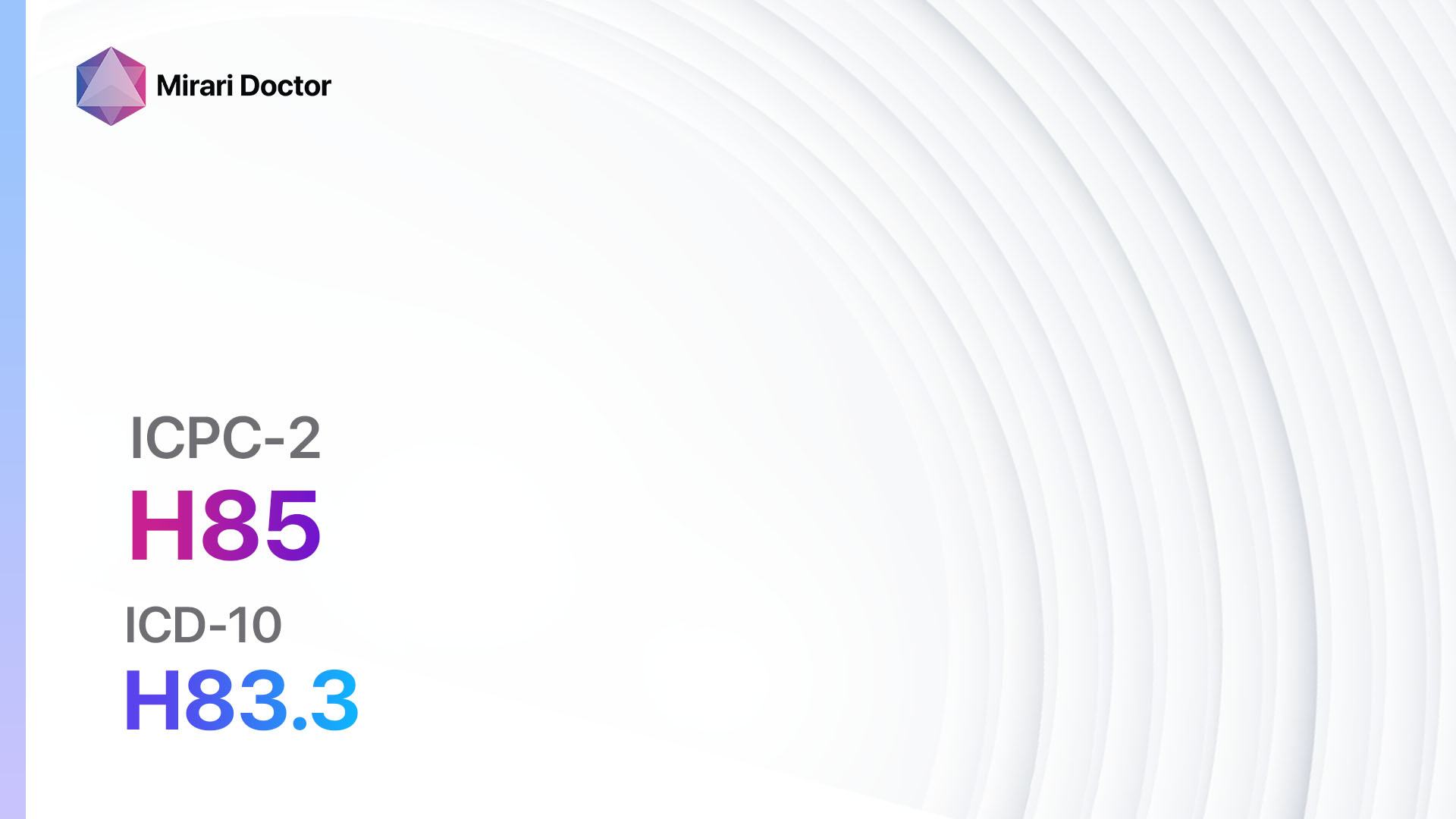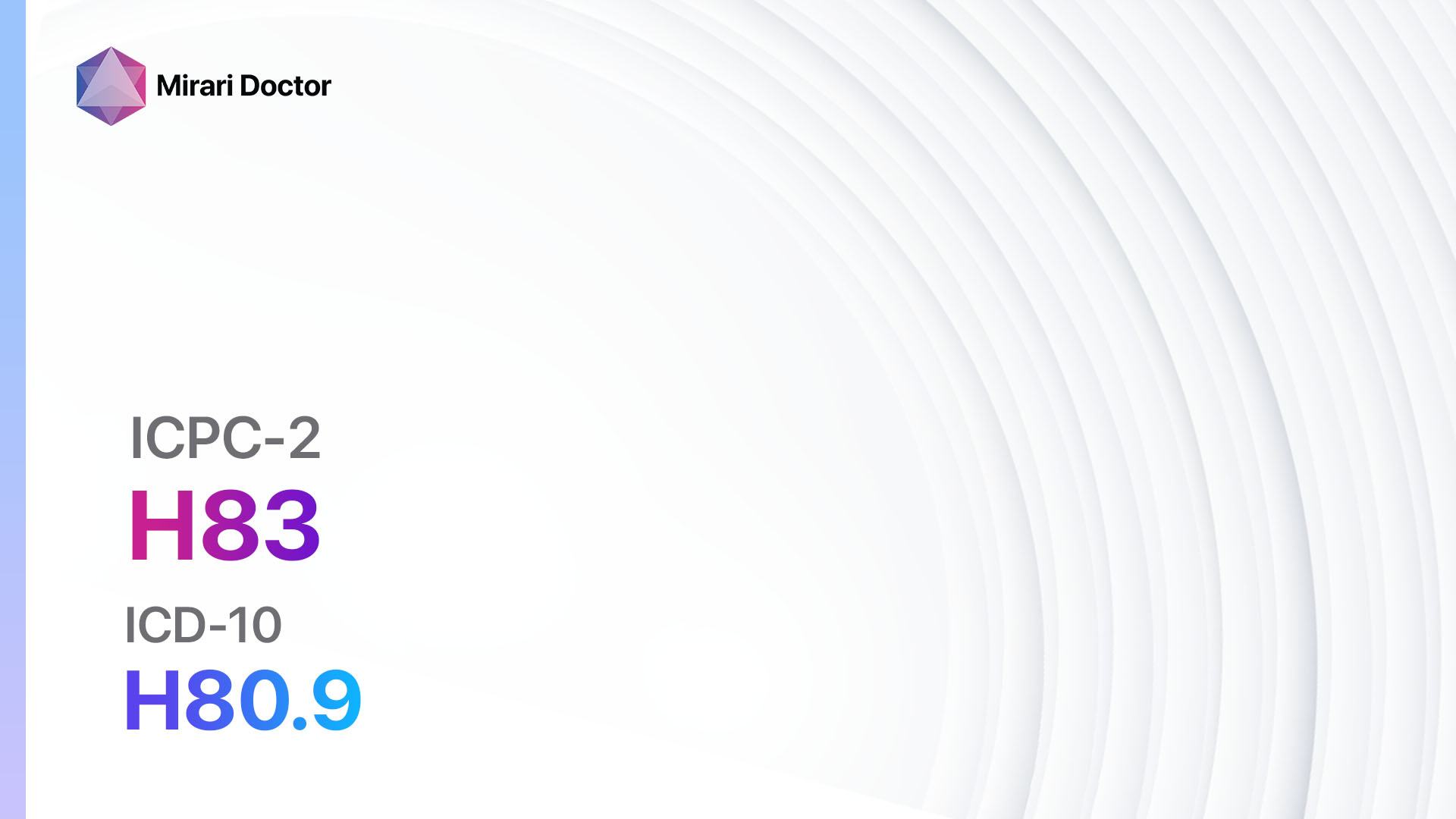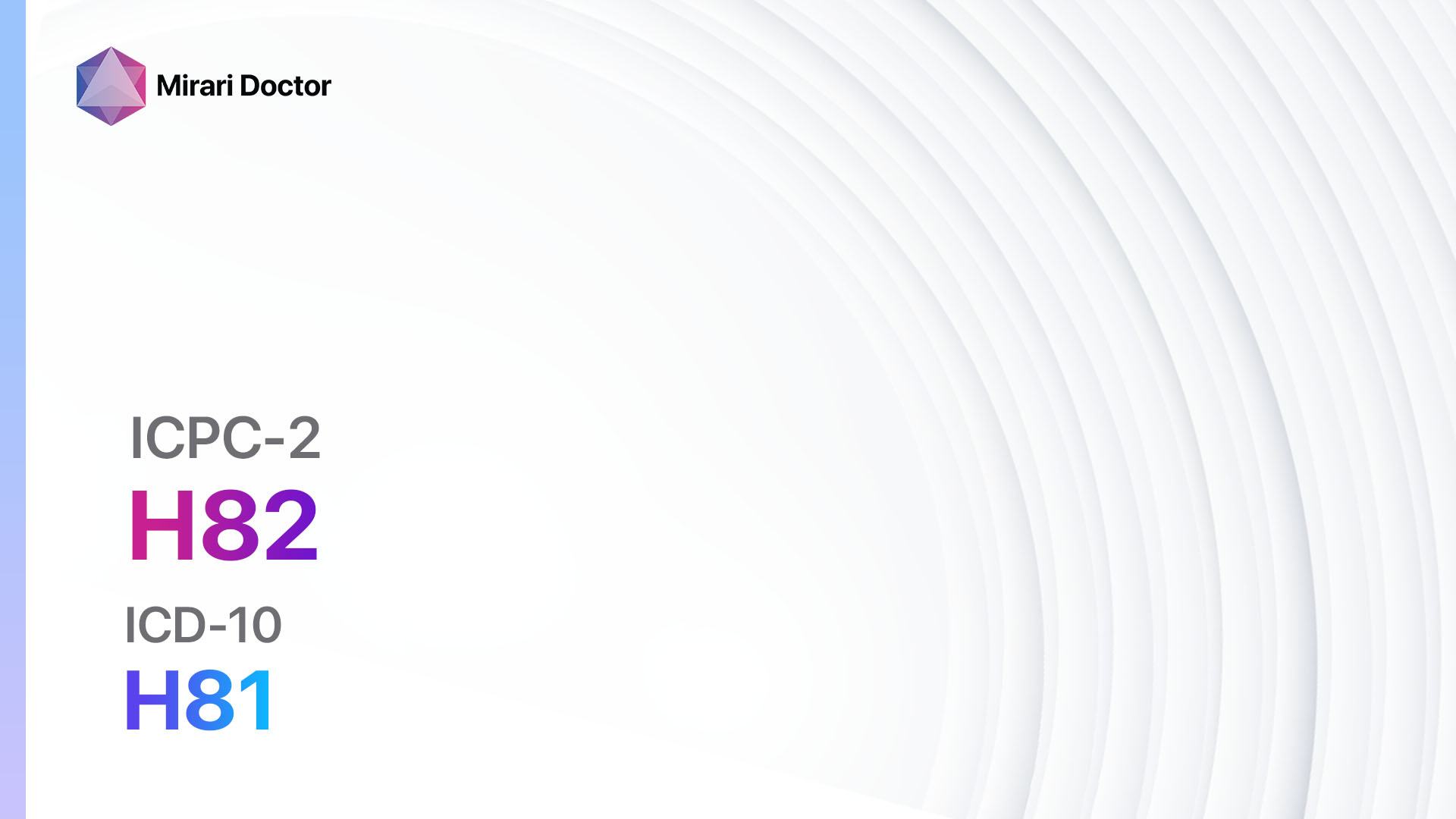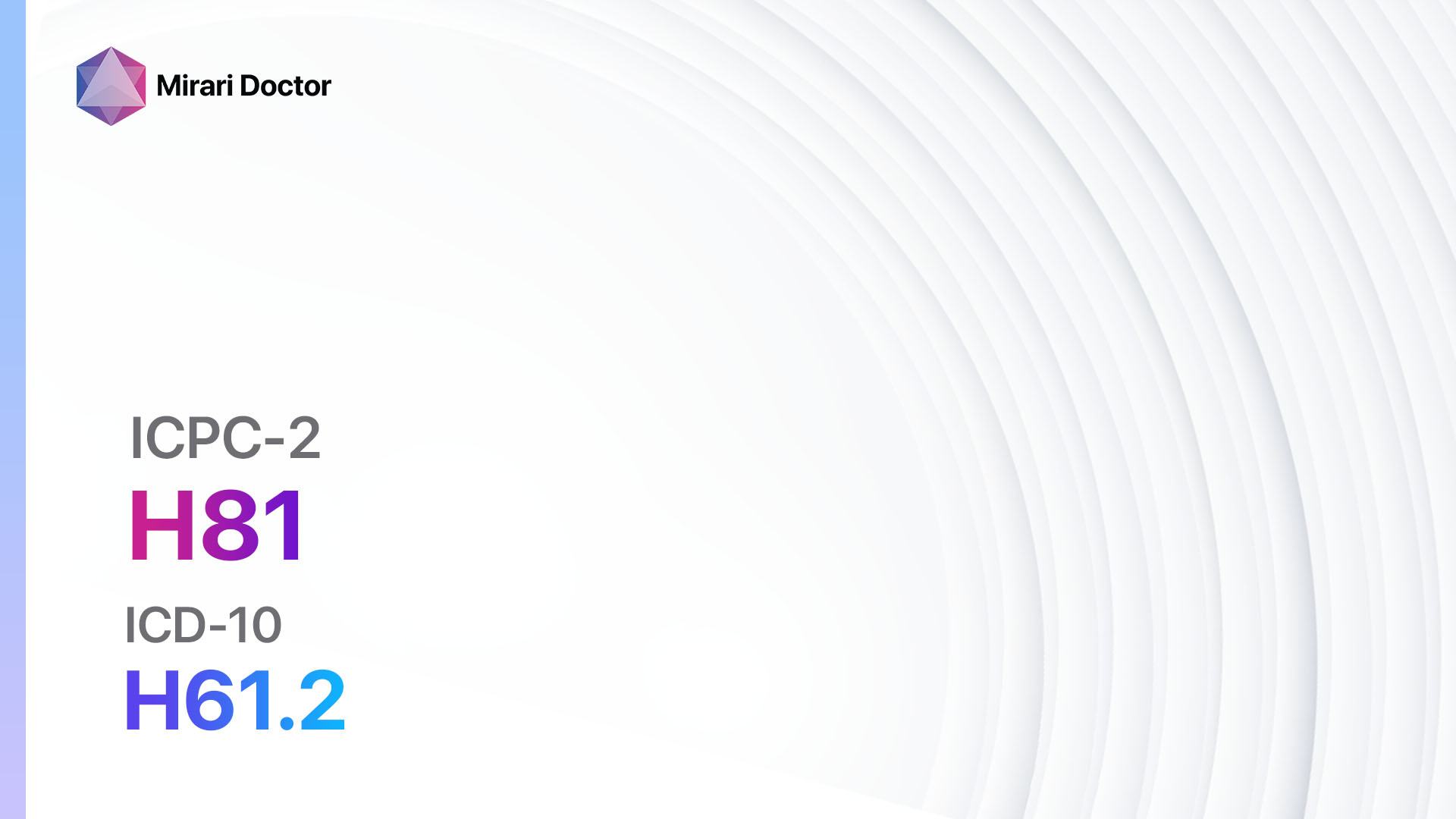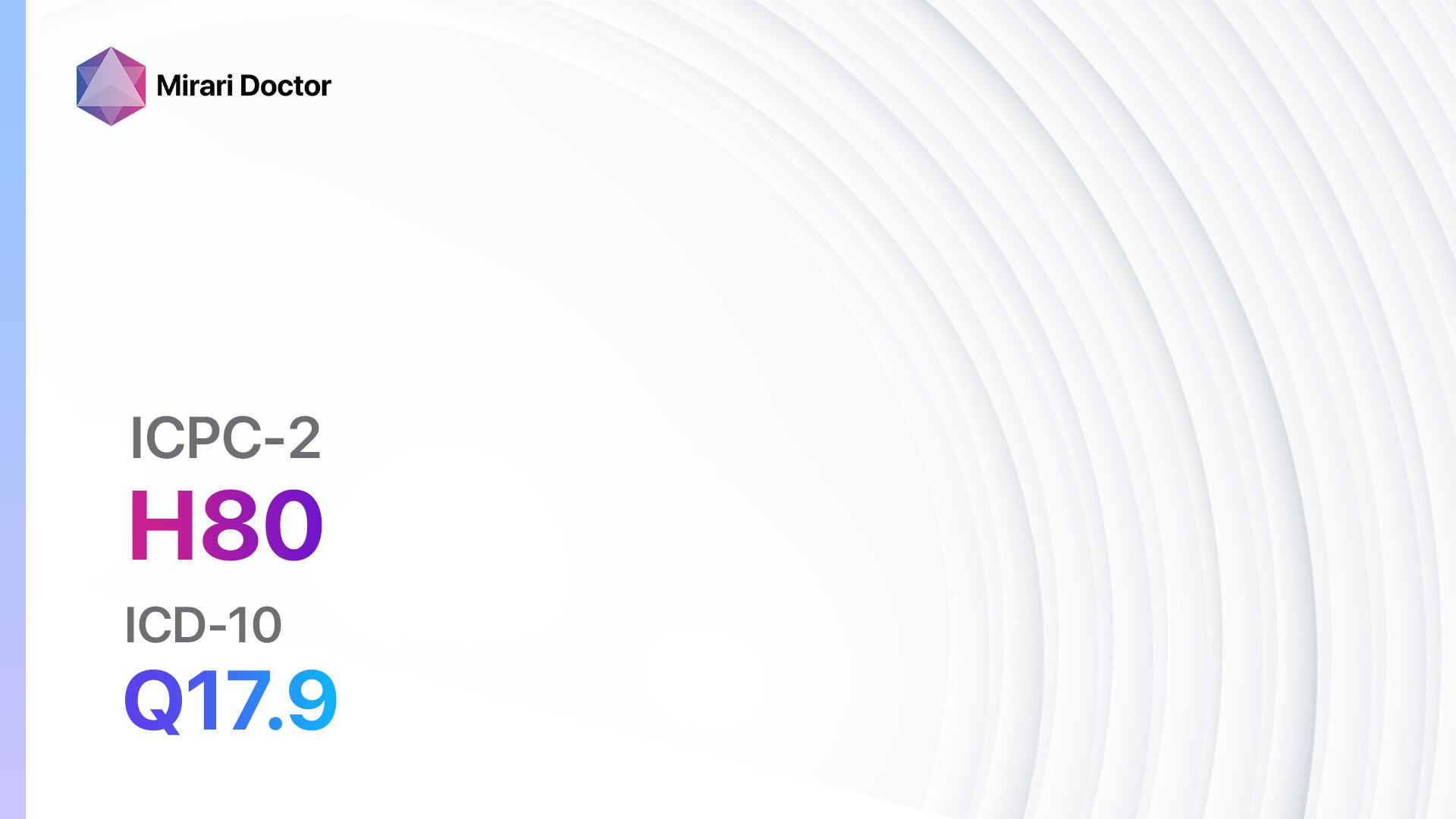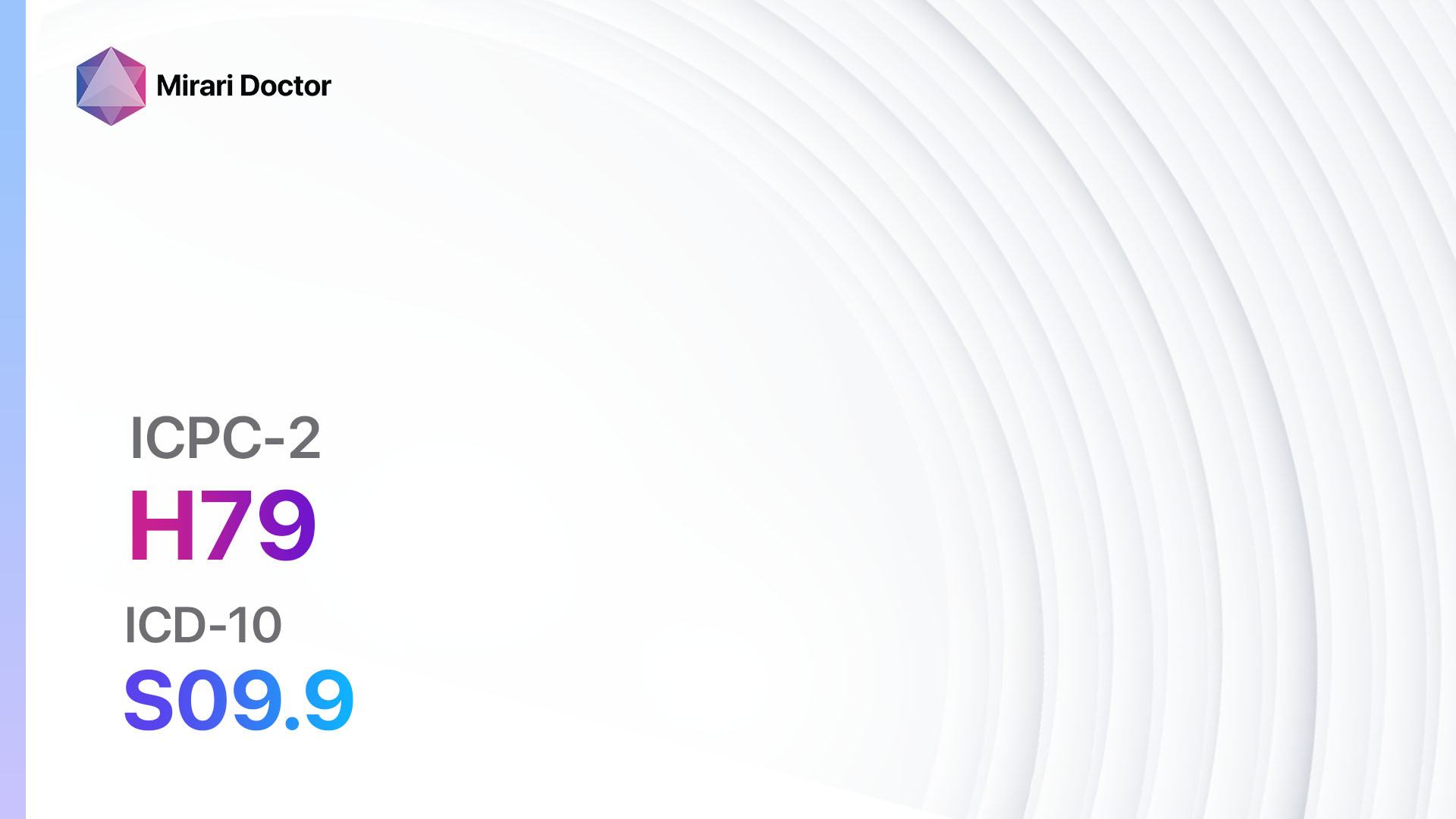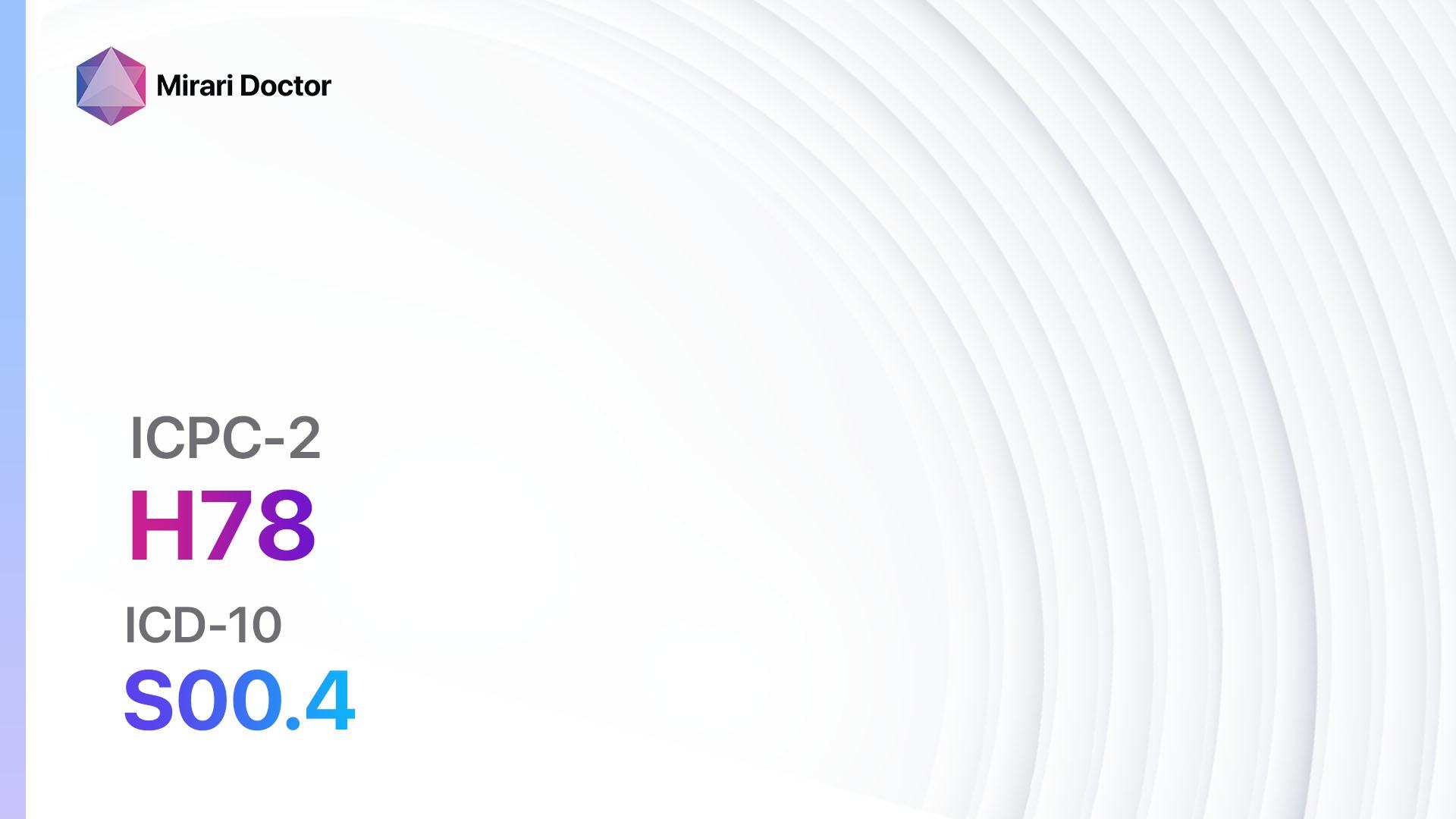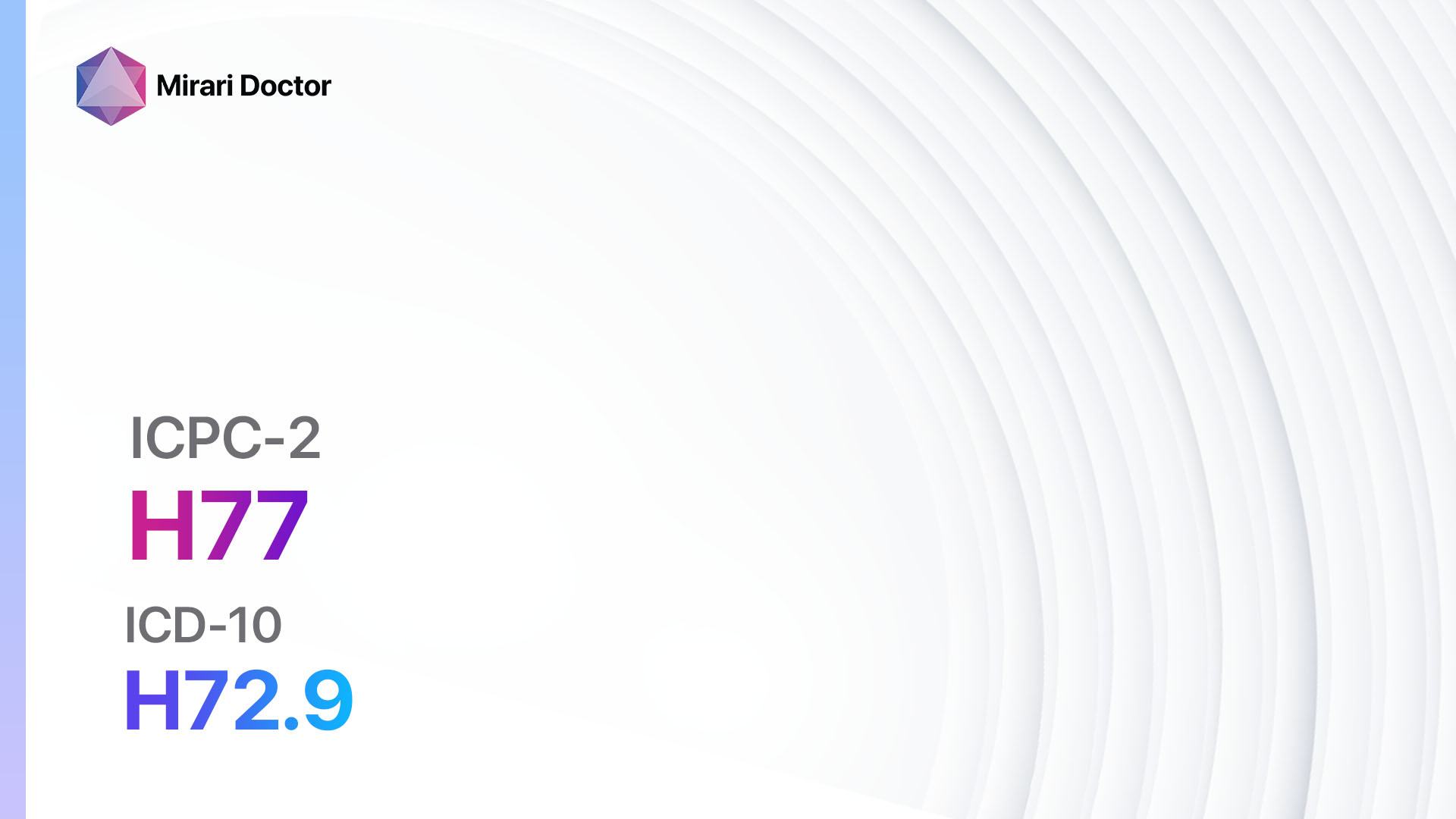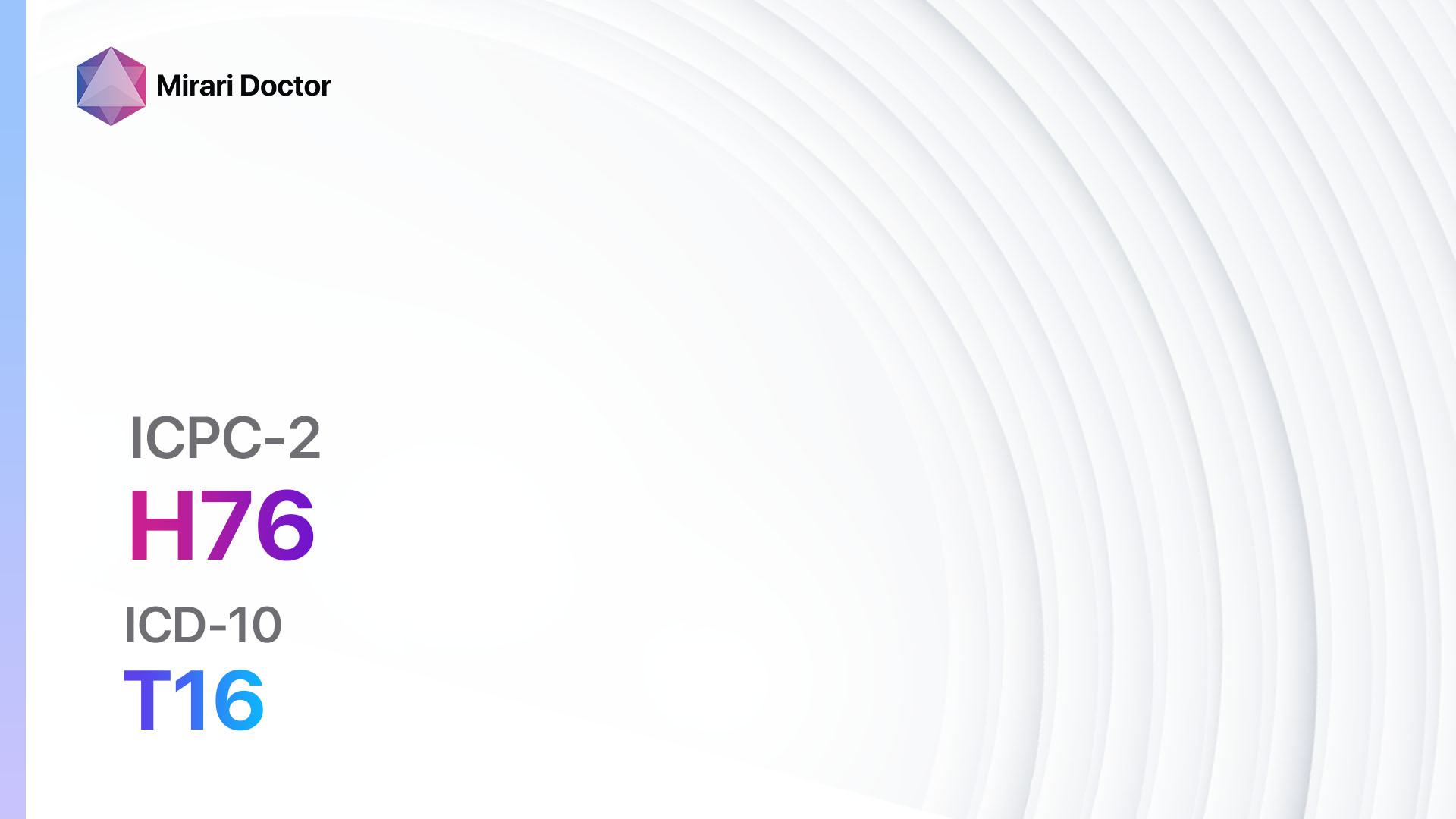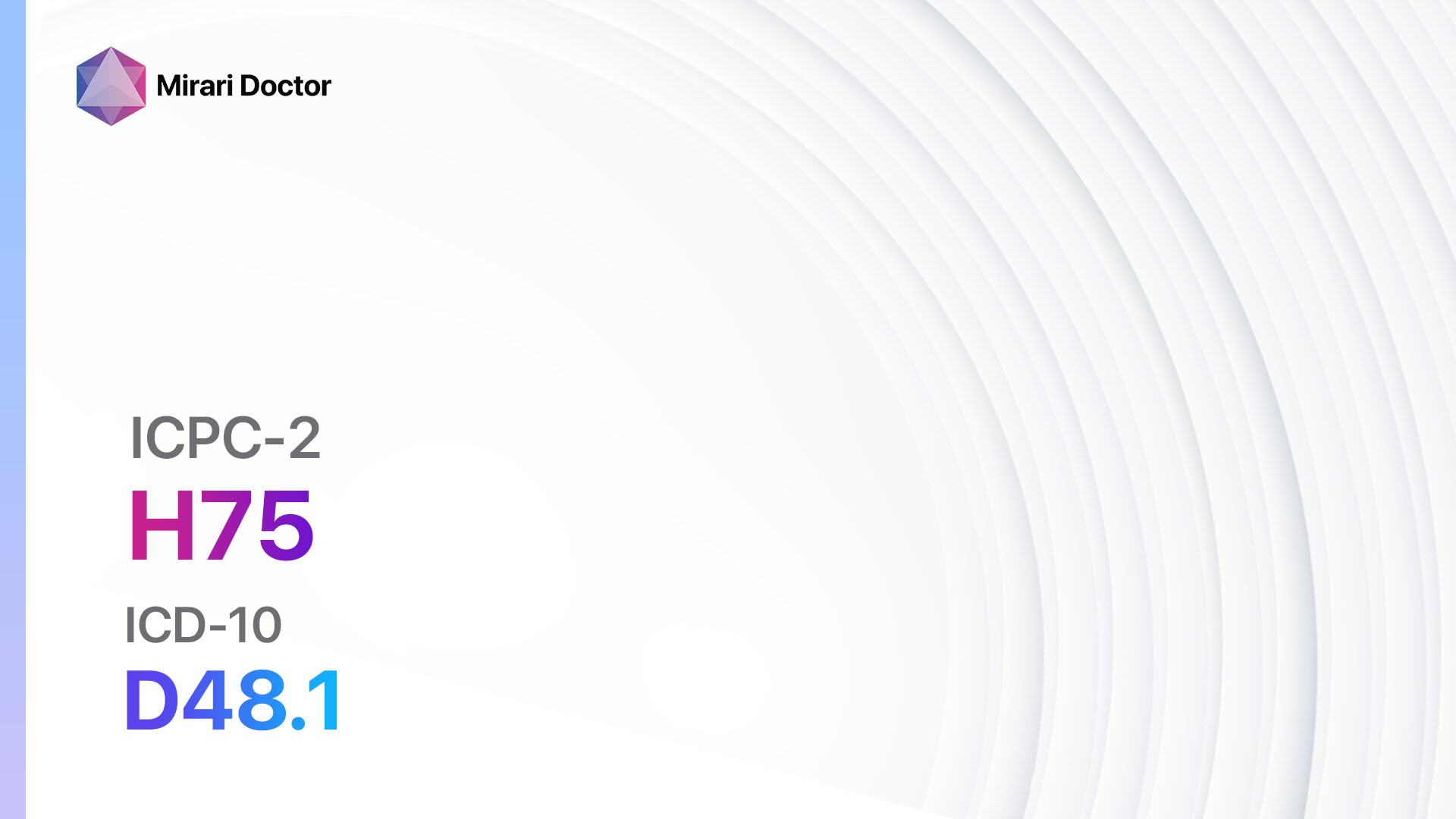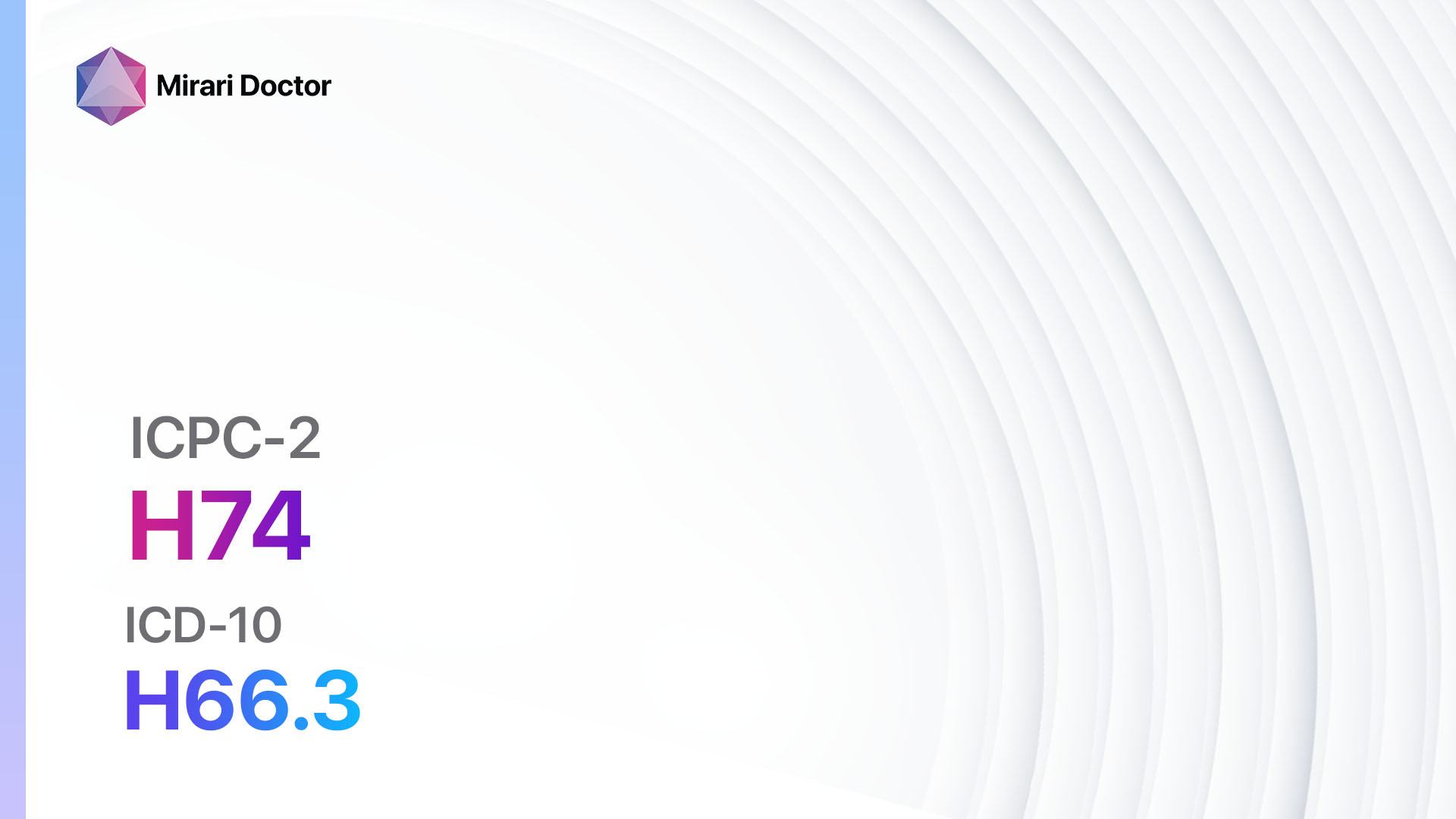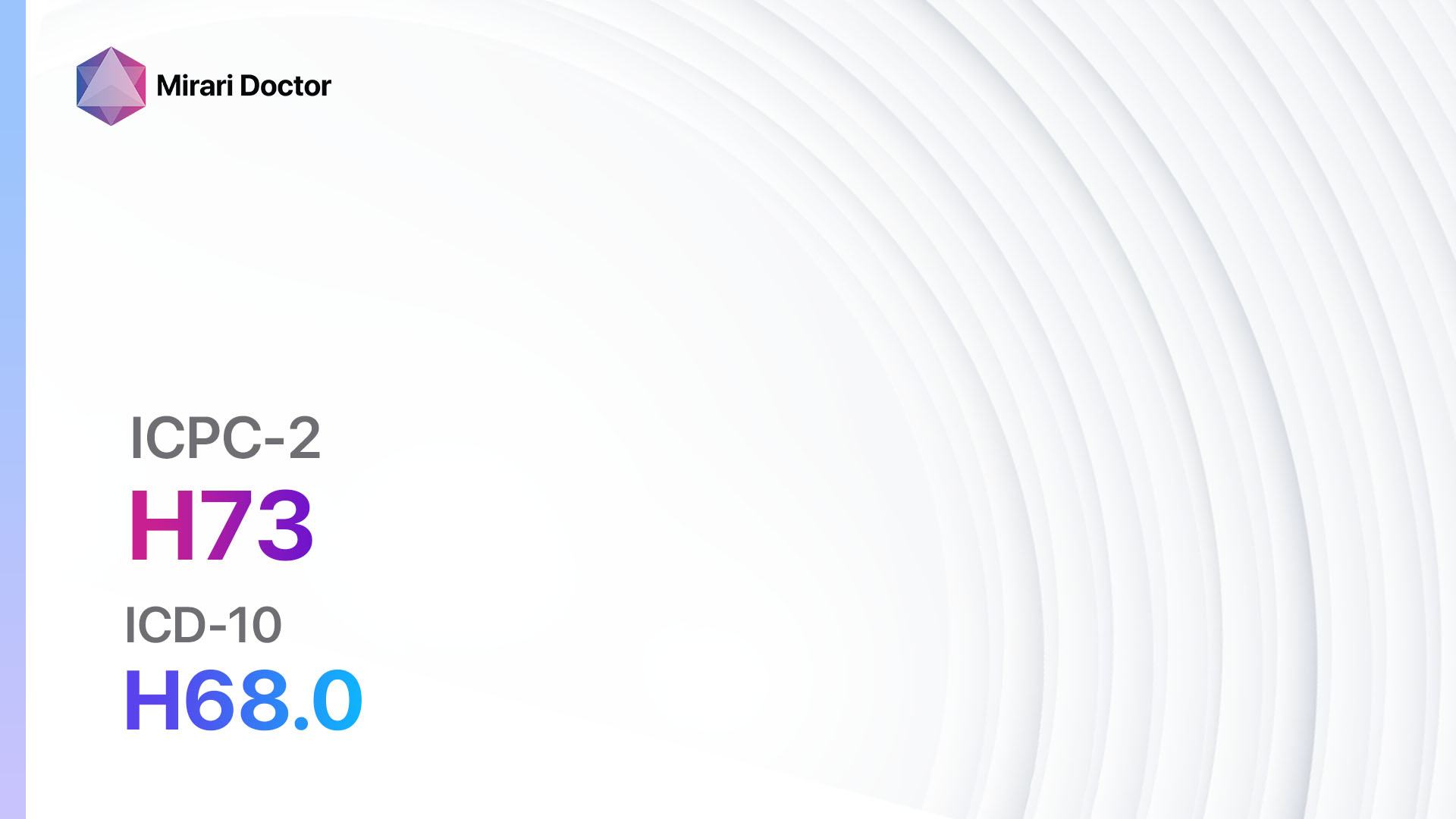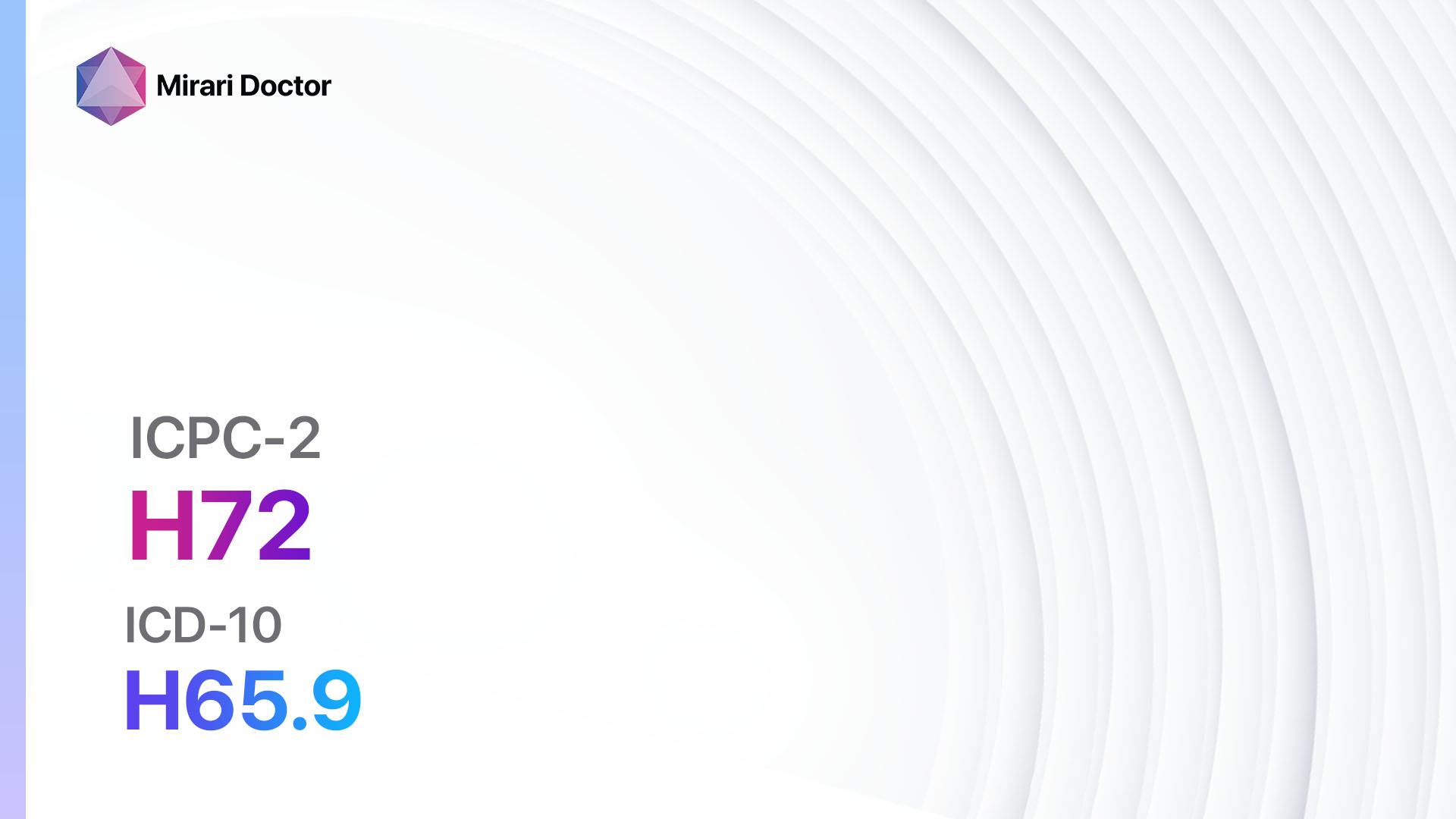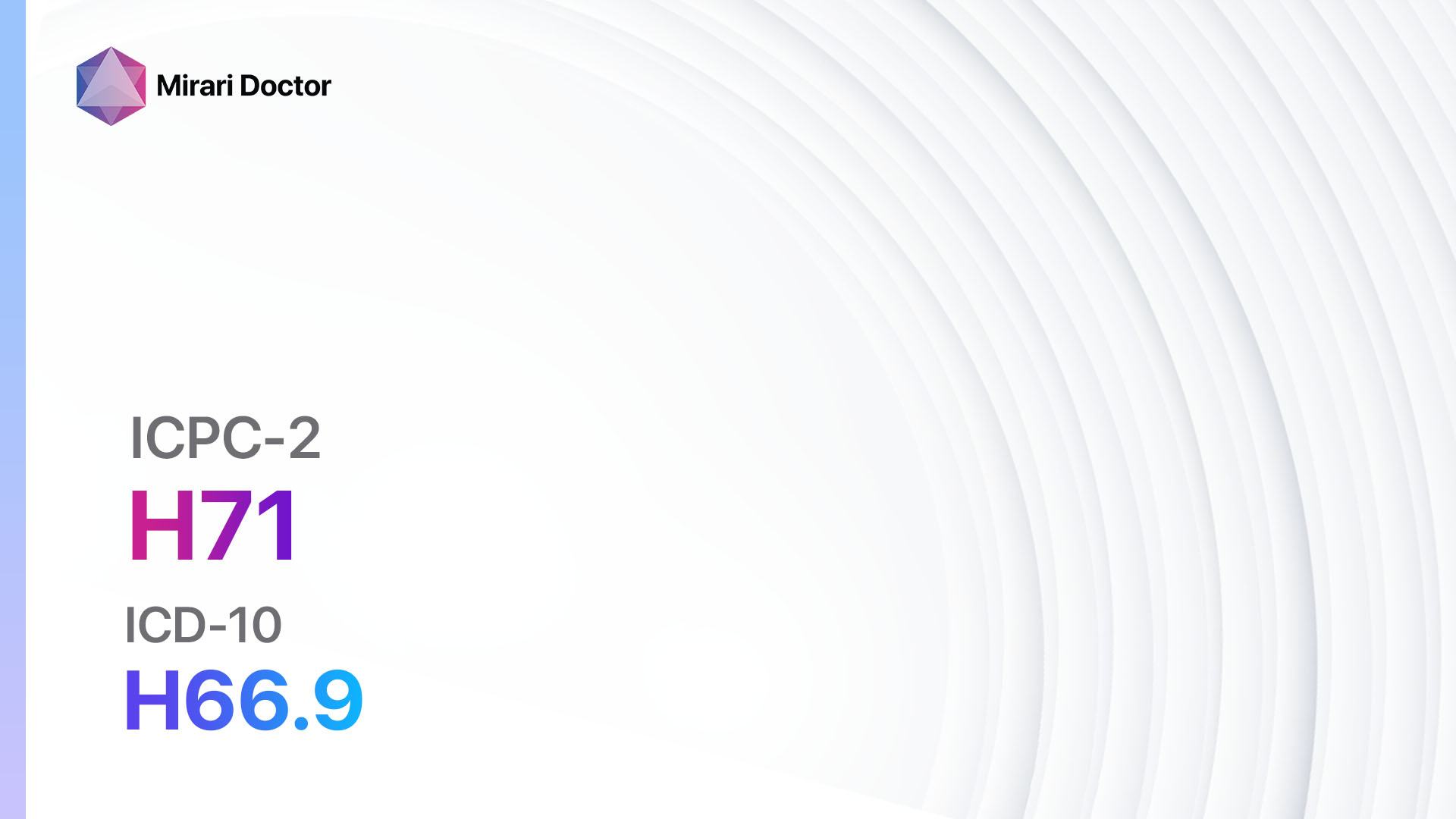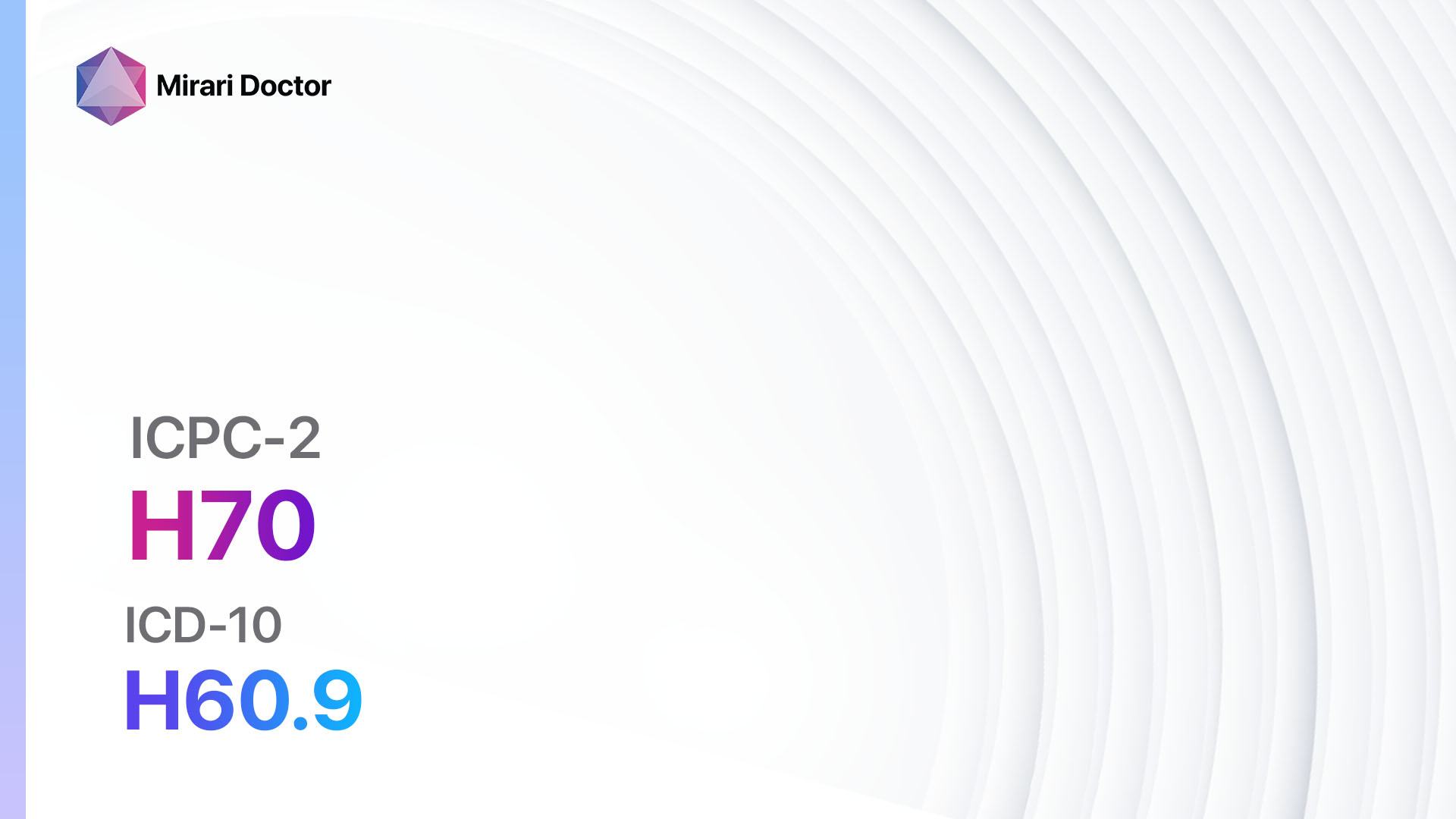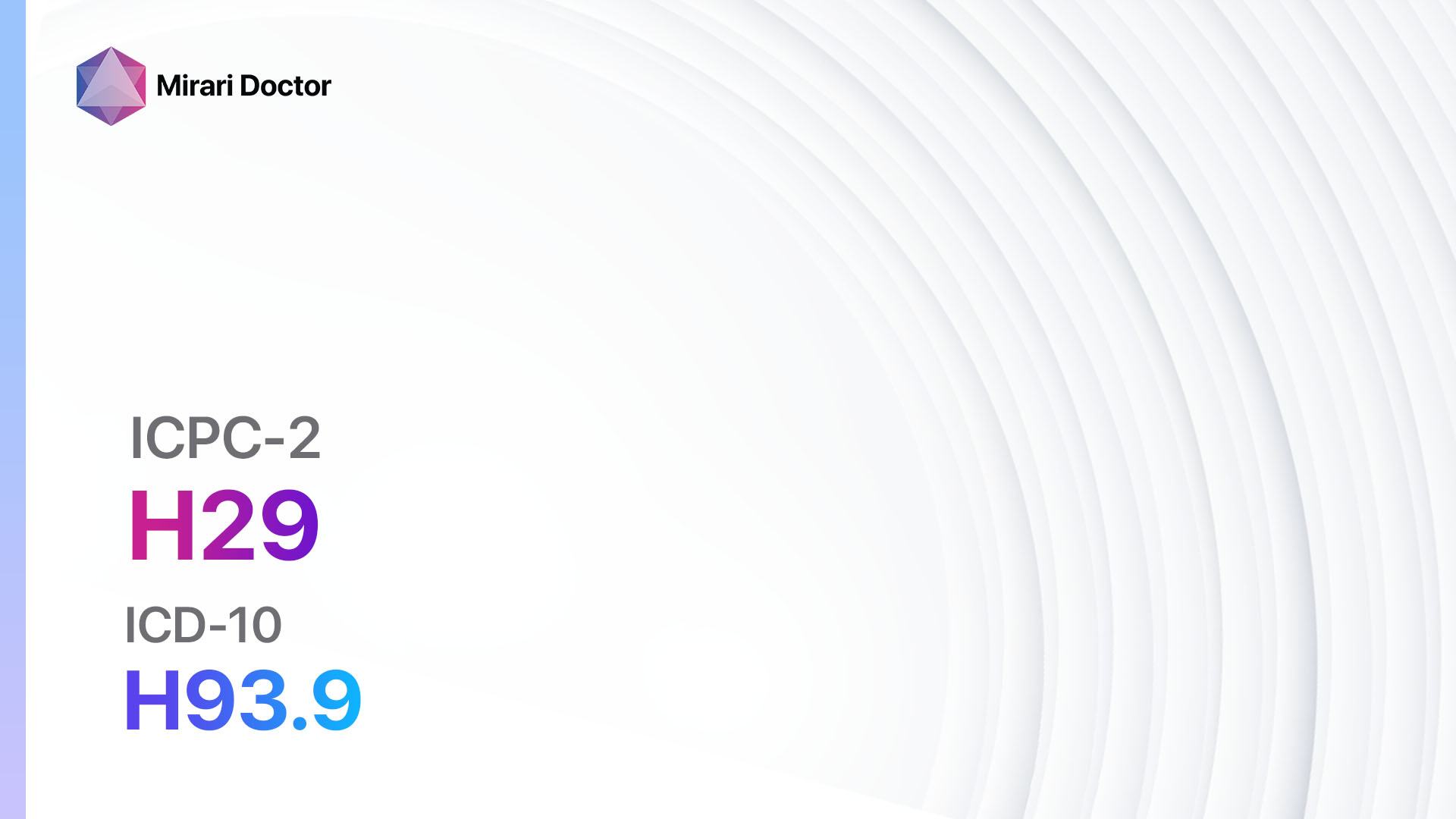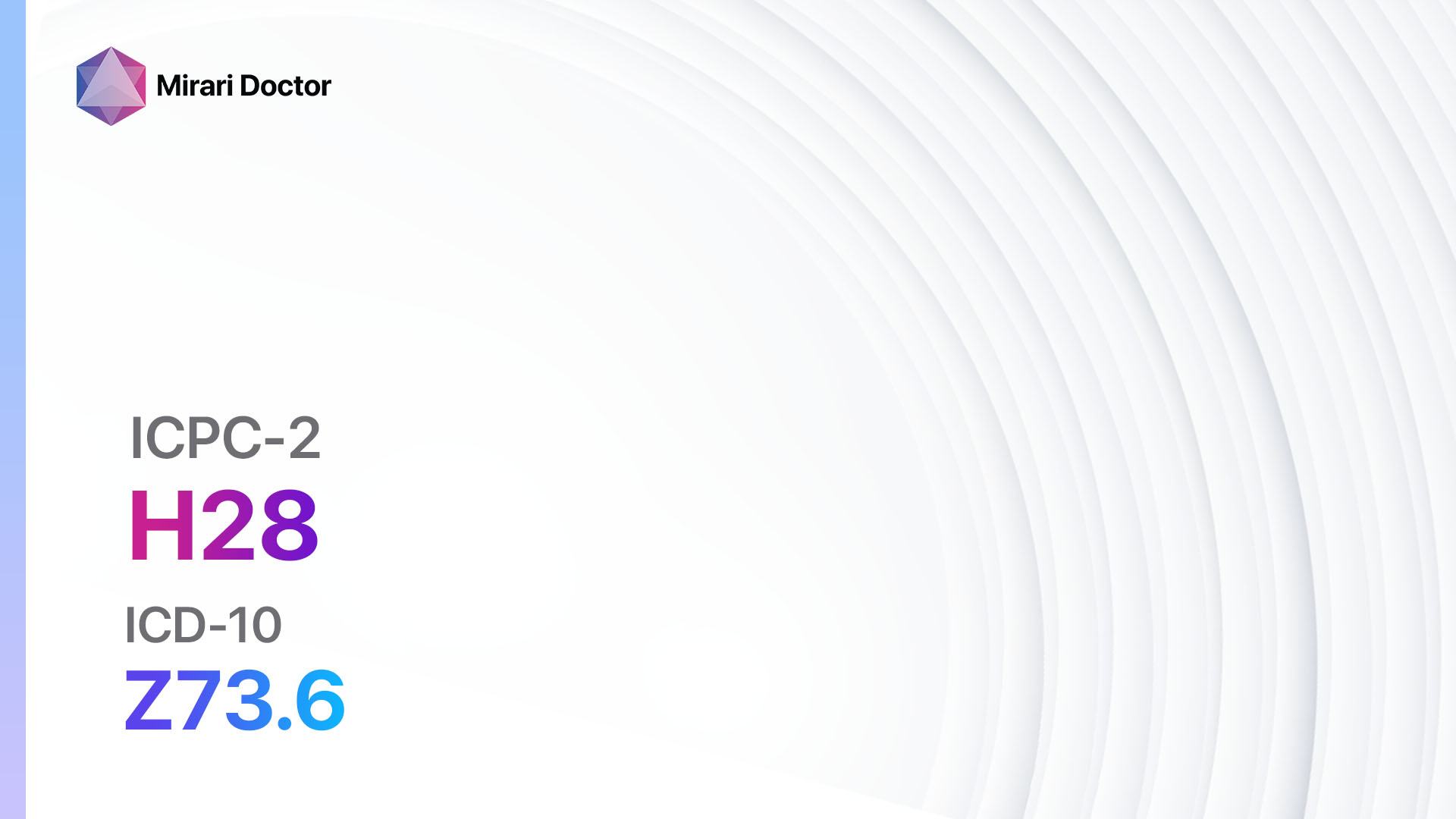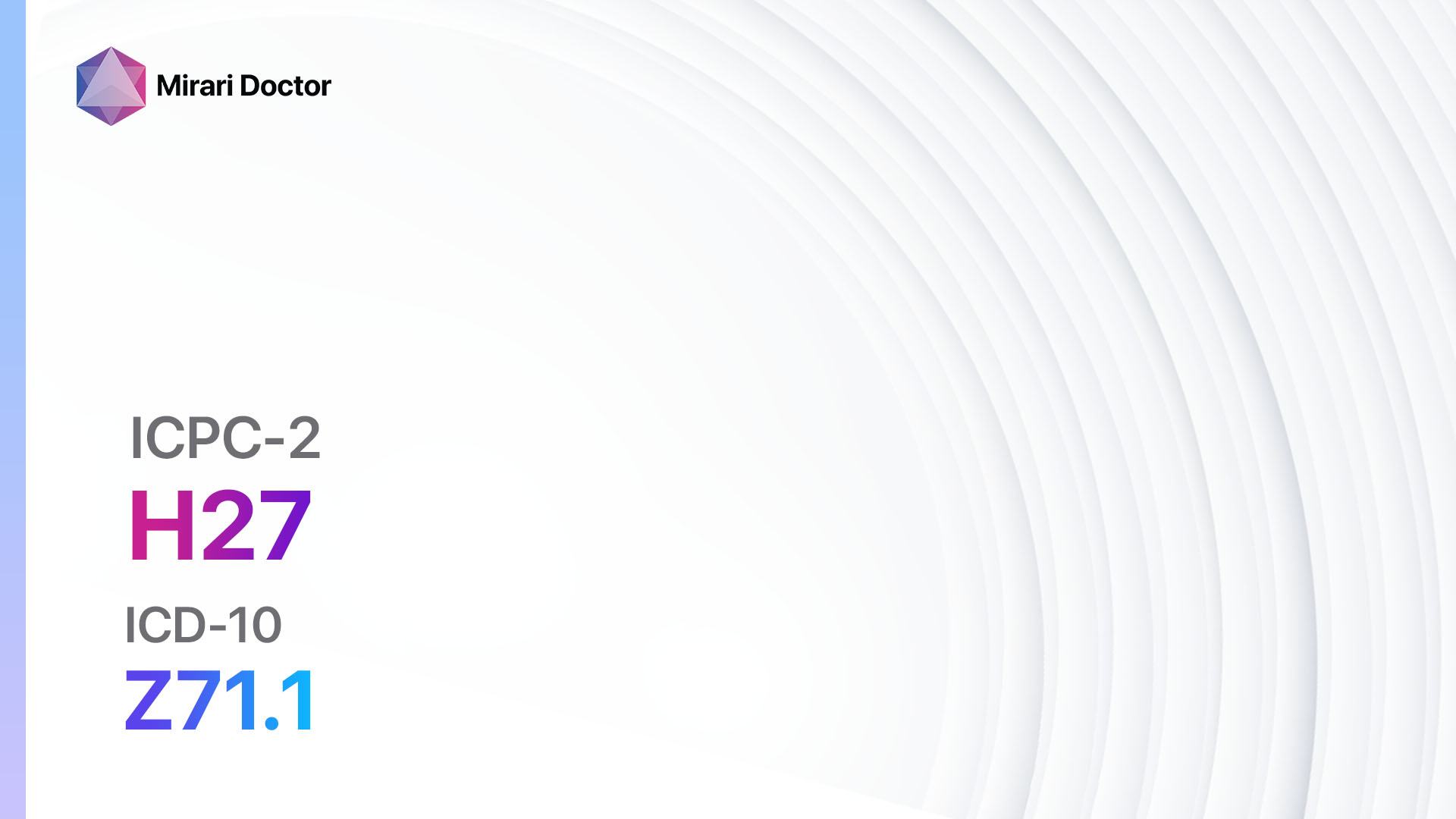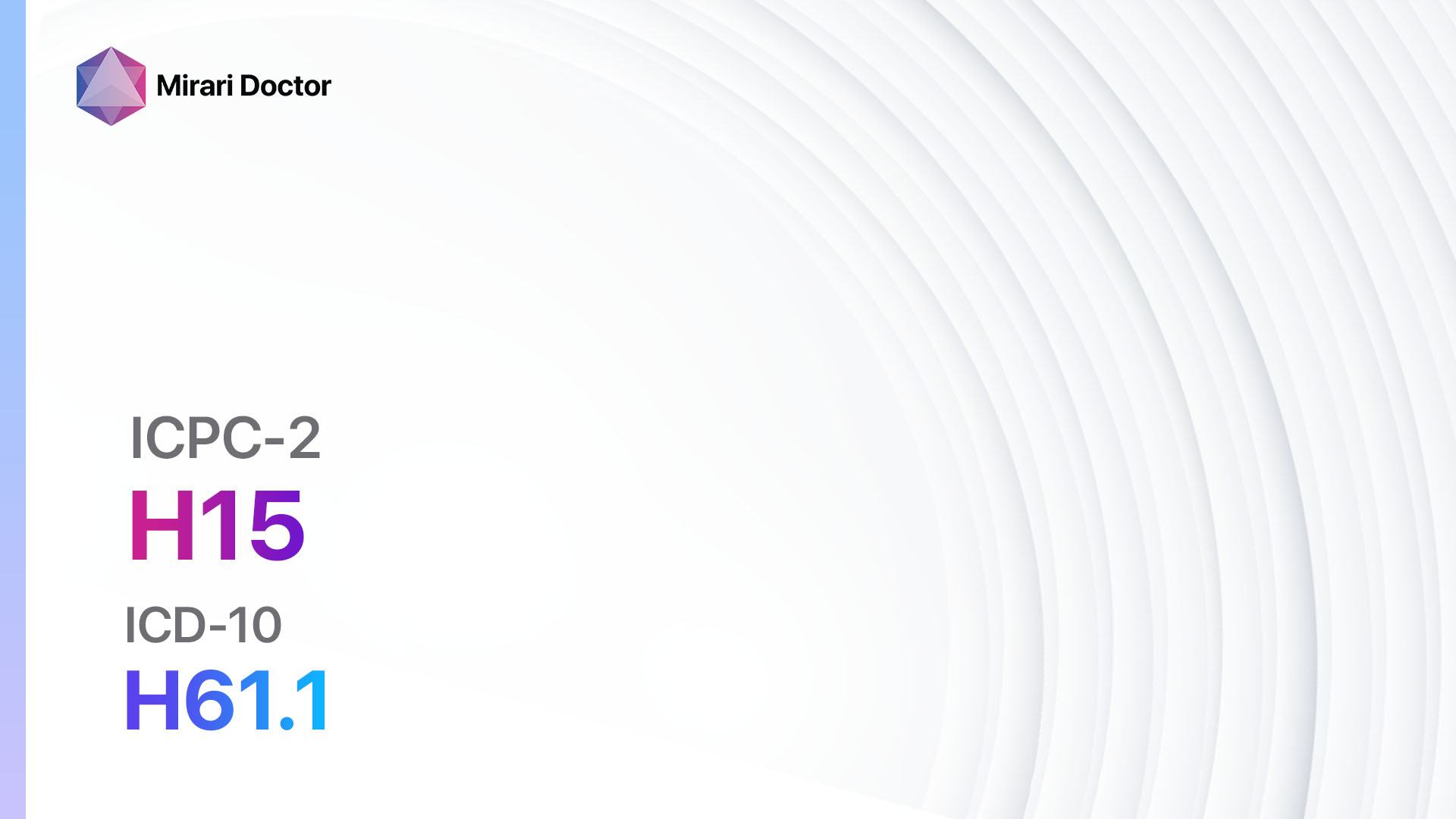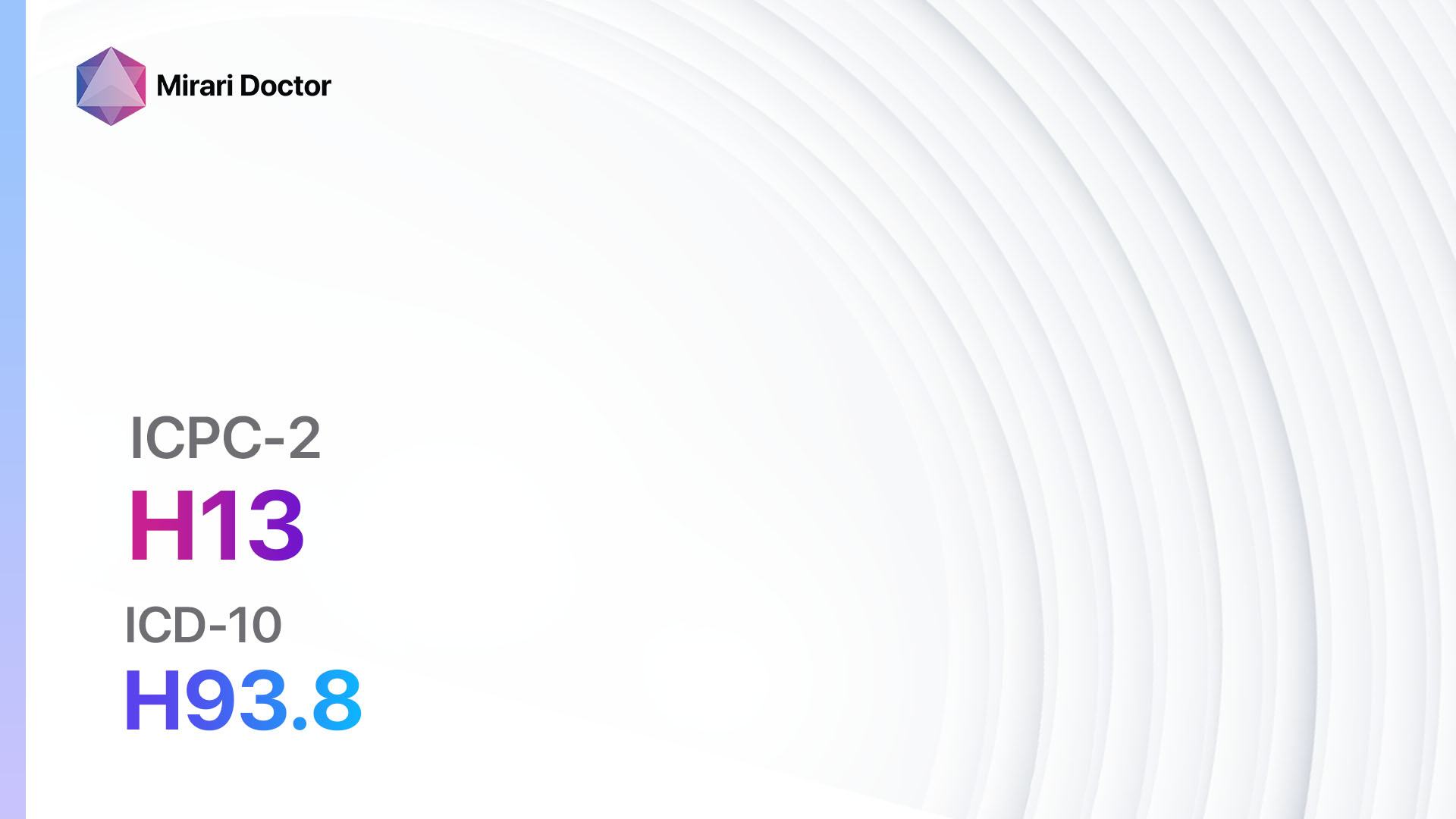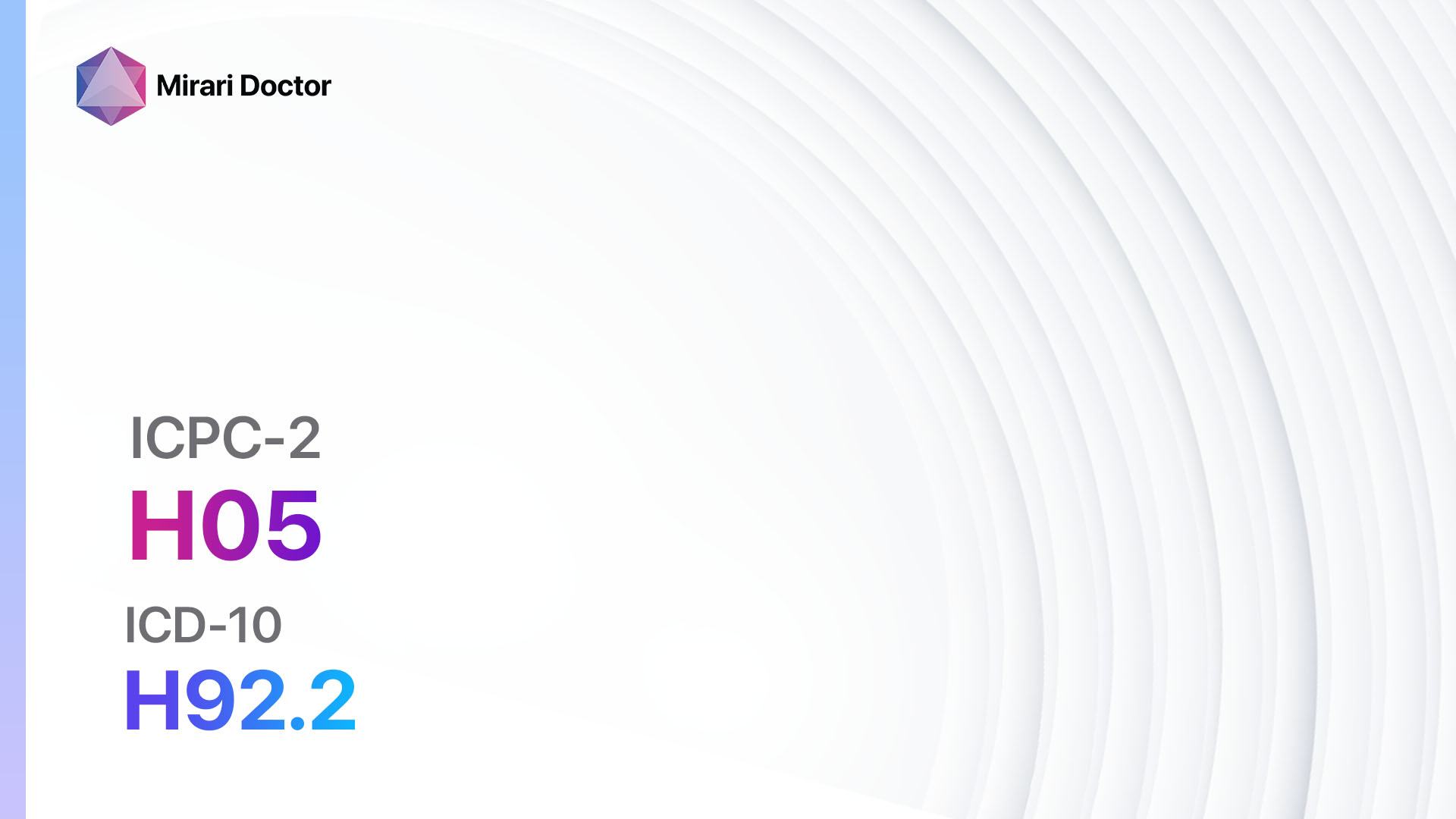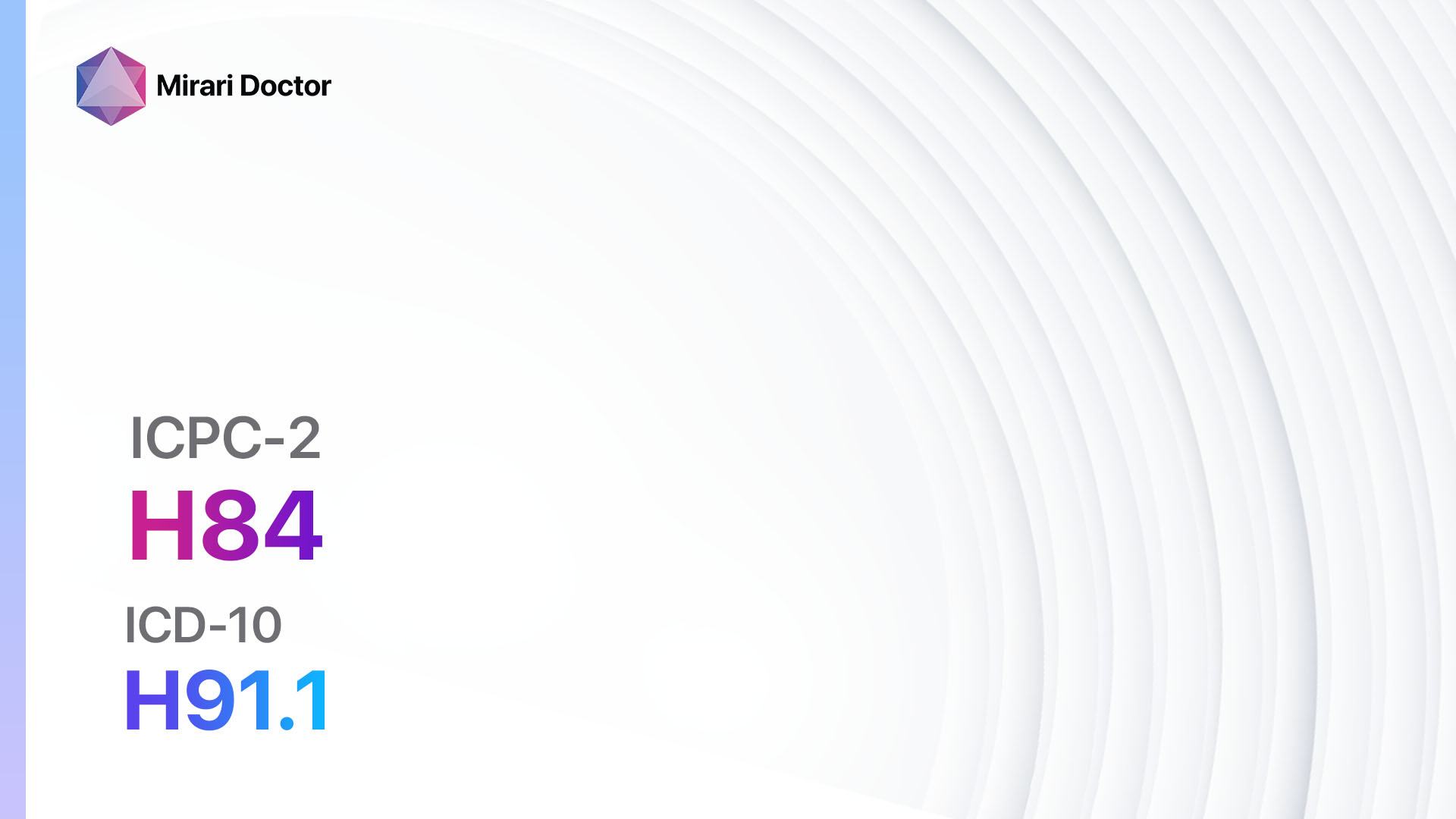
Introduction
Presbycusis, also known as age-related hearing loss, is a common condition that affects older adults. It is characterized by a gradual loss of hearing ability, particularly for high-frequency sounds[1][2]. This guide aims to provide healthcare professionals with a comprehensive overview of the diagnosis and management of presbycusis.
Codes
Symptoms
- Gradual hearing loss, typically starting with high-frequency sounds[1][5]
- Difficulty understanding speech, especially in noisy environments[2][6]
- Tinnitus (ringing or buzzing in the ears)[7]
- Sensation of ear fullness or pressure[8]
Causes
- Natural aging process and degeneration of the inner ear structures[1][9]
- Long-term exposure to loud noises[2][10]
- Genetic factors
- Certain medical conditions, such as diabetes and cardiovascular disease
- Ototoxic medications
Diagnostic Steps
Medical History
- Obtain a detailed medical history, including information on the onset and progression of hearing loss, exposure to loud noises, and any associated symptoms.
- Inquire about any medical conditions, such as diabetes or cardiovascular disease, that may contribute to hearing loss.
- Ask about the use of ototoxic medications, such as certain antibiotics or chemotherapy drugs.
Physical Examination
- Perform a thorough physical examination, including an examination of the ears, nose, and throat.
- Look for any visible abnormalities or signs of infection in the ear canal or eardrum.
- Evaluate the patient’s ability to hear and understand speech at different frequencies and volumes.
Laboratory Tests
- Pure-tone audiometry: This test measures the patient’s hearing thresholds at different frequencies. It can help determine the severity and pattern of hearing loss.
- Speech audiometry: This test assesses the patient’s ability to understand speech at different volumes. It can provide information on the patient’s speech discrimination abilities.
- Tympanometry: This test measures the movement of the eardrum in response to changes in air pressure. It can help identify any abnormalities in the middle ear.
Diagnostic Imaging
- Imaging studies, such as CT scans or MRIs, are typically not necessary for the diagnosis of presbyacusis. However, they may be ordered if there are concerns about other underlying causes of hearing loss, such as tumors or structural abnormalities.
Other Tests
- Otoacoustic emissions (OAE) testing: This test measures the sounds that are produced by the inner ear in response to a sound stimulus. It can help determine the integrity of the inner ear structures.
- Auditory brainstem response (ABR) testing: This test measures the electrical activity of the auditory nerve and brainstem in response to sound. It can help assess the function of the auditory pathway.
Follow-up and Patient Education
- Schedule regular follow-up appointments to monitor the progression of hearing loss and adjust treatment as needed.
- Provide patient education on strategies to improve communication, such as using assistive listening devices or lip-reading techniques.
- Refer patients to audiology services for further evaluation and management.
Possible Interventions
Traditional Interventions
Medications:
Top 5 drugs for Presbyacusis:
- Hearing aids:
- Cost: $1,000-$4,000 per ear.
- Contraindications: None.
- Side effects: Discomfort, feedback noise.
- Severe side effects: None.
- Drug interactions: None.
- Warning: Regular cleaning and maintenance required.
- Cochlear implants:
- Cost: $50,000-$100,000.
- Contraindications: None.
- Side effects: Infection, device failure.
- Severe side effects: None.
- Drug interactions: None.
- Warning: Requires surgical implantation.
- Middle ear implants:
- Cost: $20,000-$30,000.
- Contraindications: None.
- Side effects: Infection, device failure.
- Severe side effects: None.
- Drug interactions: None.
- Warning: Requires surgical implantation.
- Assistive listening devices:
- Cost: $100-$500.
- Contraindications: None.
- Side effects: None.
- Severe side effects: None.
- Drug interactions: None.
- Warning: May require additional training for optimal use.
- Auditory training programs:
- Cost: Varies depending on the program.
- Contraindications: None.
- Side effects: None.
- Severe side effects: None.
- Drug interactions: None.
- Warning: Requires regular practice and commitment.
Alternative Drugs:
- None.
Surgical Procedures:
- None.
Alternative Interventions
- Acupuncture: May help improve blood flow and reduce tinnitus. Cost: $60-$120 per session.
- Herbal supplements: Some herbs, such as ginkgo biloba, may have potential benefits for improving circulation and reducing tinnitus. Cost: Varies depending on the specific supplement.
- Sound therapy: Involves the use of specific sounds or frequencies to help mask tinnitus and improve overall hearing. Cost: $50-$200 for sound therapy devices.
- Cognitive behavioral therapy (CBT): Can help patients cope with the emotional and psychological impact of hearing loss. Cost: $100-$200 per session.
- Lip-reading classes: Can improve communication skills for individuals with hearing loss. Cost: $100-$300 for a series of classes.
Lifestyle Interventions
- Avoid exposure to loud noises and use ear protection when necessary.
- Maintain a healthy lifestyle, including regular exercise and a balanced diet, to promote overall well-being.
- Manage underlying medical conditions, such as diabetes or cardiovascular disease, that may contribute to hearing loss.
- Stay socially active and engage in activities that stimulate the brain, such as reading or puzzles.
- Use assistive devices, such as amplified telephones or closed-captioning on televisions, to improve communication.
It is important to note that the cost ranges provided are approximate and may vary depending on the location and availability of the interventions.
Mirari Cold Plasma Alternative Intervention
Understanding Mirari Cold Plasma
- Safe and Non-Invasive Treatment: Mirari Cold Plasma is a safe and non-invasive treatment option for various skin conditions. It does not require incisions, minimizing the risk of scarring, bleeding, or tissue damage.
- Efficient Extraction of Foreign Bodies: Mirari Cold Plasma facilitates the removal of foreign bodies from the skin by degrading and dissociating organic matter, allowing easier access and extraction.
- Pain Reduction and Comfort: Mirari Cold Plasma has a local analgesic effect, providing pain relief during the treatment, making it more comfortable for the patient.
- Reduced Risk of Infection: Mirari Cold Plasma has antimicrobial properties, effectively killing bacteria and reducing the risk of infection.
- Accelerated Healing and Minimal Scarring: Mirari Cold Plasma stimulates wound healing and tissue regeneration, reducing healing time and minimizing the formation of scars.
Mirari Cold Plasma Prescription
Video instructions for using Mirari Cold Plasma Device – H84 Presbyacusis (ICD-10:H91.1)
| Mild | Moderate | Severe |
| Mode setting: 1 (Infection) Location: 0 (Localized) Morning: 15 minutes, Evening: 15 minutes | Mode setting: 1 (Infection) Location: 0 (Localized) Morning: 30 minutes, Lunch: 30 minutes, Evening: 30 minutes | Mode setting: 1 (Infection) Location: 0 (Localized) Morning: 30 minutes, Lunch: 30 minutes, Evening: 30 minutes |
| Mode setting: 2 (Wound Healing) Location: 0 (Localized) Morning: 15 minutes, Evening: 15 minutes | Mode setting: 2 (Wound Healing) Location: 0 (Localized) Morning: 30 minutes, Lunch: 30 minutes, Evening: 30 minutes | Mode setting: 2 (Wound Healing) Location: 0 (Localized) Morning: 30 minutes, Lunch: 30 minutes, Evening: 30 minutes |
| Mode setting: 3 (Antiviral Therapy) Location: 0 (Localized) Morning: 15 minutes, Evening: 15 minutes | Mode setting: 3 (Antiviral Therapy) Location: 0 (Localized) Morning: 30 minutes, Lunch: 30 minutes, Evening: 30 minutes | Mode setting: 3 (Antiviral Therapy) Location: 0 (Localized) Morning: 30 minutes, Lunch: 30 minutes, Evening: 30 minutes |
| Total Morning: 45 minutes approx. $7.50 USD, Evening: 45 minutes approx. $7.50 USD | Total Morning: 90 minutes approx. $15 USD, Lunch: 90 minutes approx. $15 USD, Evening: 90 minutes approx. $15 USD, | Total Morning: 90 minutes approx. $15 USD, Lunch: 90 minutes approx. $15 USD, Evening: 90 minutes approx. $15 USD, |
| Usual treatment for 7-60 days approx. $105 USD – $900 USD | Usual treatment for 6-8 weeks approx. $1,890USD – $2,520 USD | Usual treatment for 3-6 months approx. $4,050 USD – $8,100 USD |
 |
|
Use the Mirari Cold Plasma device to treat Presbyacusis effectively.
WARNING: MIRARI COLD PLASMA IS DESIGNED FOR THE HUMAN BODY WITHOUT ANY ARTIFICIAL OR THIRD PARTY PRODUCTS. USE OF OTHER PRODUCTS IN COMBINATION WITH MIRARI COLD PLASMA MAY CAUSE UNPREDICTABLE EFFECTS, HARM OR INJURY. PLEASE CONSULT A MEDICAL PROFESSIONAL BEFORE COMBINING ANY OTHER PRODUCTS WITH USE OF MIRARI.
Step 1: Cleanse the Skin
- Start by cleaning the affected area of the skin with a gentle cleanser or mild soap and water. Gently pat the area dry with a clean towel.
Step 2: Prepare the Mirari Cold Plasma device
- Ensure that the Mirari Cold Plasma device is fully charged or has fresh batteries as per the manufacturer’s instructions. Make sure the device is clean and in good working condition.
- Switch on the Mirari device using the power button or by following the specific instructions provided with the device.
- Some Mirari devices may have adjustable settings for intensity or treatment duration. Follow the manufacturer’s instructions to select the appropriate settings based on your needs and the recommended guidelines.
Step 3: Apply the Device
- Place the Mirari device in direct contact with the affected area of the skin. Gently glide or hold the device over the skin surface, ensuring even coverage of the area experiencing.
- Slowly move the Mirari device in a circular motion or follow a specific pattern as indicated in the user manual. This helps ensure thorough treatment coverage.
Step 4: Monitor and Assess:
- Keep track of your progress and evaluate the effectiveness of the Mirari device in managing your Presbyacusis. If you have any concerns or notice any adverse reactions, consult with your health care professional.
Note
This guide is for informational purposes only and should not replace the advice of a medical professional. Always consult with your healthcare provider or a qualified medical professional for personal advice, diagnosis, or treatment. Do not solely rely on the information presented here for decisions about your health. Use of this information is at your own risk. The authors of this guide, nor any associated entities or platforms, are not responsible for any potential adverse effects or outcomes based on the content.
Mirari Cold Plasma System Disclaimer
- Purpose: The Mirari Cold Plasma System is a Class 2 medical device designed for use by trained healthcare professionals. It is registered for use in Thailand and Vietnam. It is not intended for use outside of these locations.
- Informational Use: The content and information provided with the device are for educational and informational purposes only. They are not a substitute for professional medical advice or care.
- Variable Outcomes: While the device is approved for specific uses, individual outcomes can differ. We do not assert or guarantee specific medical outcomes.
- Consultation: Prior to utilizing the device or making decisions based on its content, it is essential to consult with a Certified Mirari Tele-Therapist and your medical healthcare provider regarding specific protocols.
- Liability: By using this device, users are acknowledging and accepting all potential risks. Neither the manufacturer nor the distributor will be held accountable for any adverse reactions, injuries, or damages stemming from its use.
- Geographical Availability: This device has received approval for designated purposes by the Thai and Vietnam FDA. As of now, outside of Thailand and Vietnam, the Mirari Cold Plasma System is not available for purchase or use.
References
- Cunningham, L. L., & Tucci, D. L. (2017). Hearing Loss in Adults. New England Journal of Medicine, 377(25), 2465-2473.
- Gates, G. A., & Mills, J. H. (2005). Presbycusis. The Lancet, 366(9491), 1111-1120.
- WONCA International Classification Committee. (1998). ICPC-2: International Classification of Primary Care. Oxford University Press, USA.
- World Health Organization. (2019). International statistical classification of diseases and related health problems (11th ed.).
- Huang, Q., & Tang, J. (2010). Age-related hearing loss or presbycusis. European Archives of Oto-Rhino-Laryngology, 267(8), 1179-1191.
- Pichora-Fuller, M. K., & Souza, P. E. (2003). Effects of aging on auditory processing of speech. International Journal of Audiology, 42(sup2), 11-16.
- Shargorodsky, J., Curhan, G. C., & Farwell, W. R. (2010). Prevalence and characteristics of tinnitus among US adults. The American Journal of Medicine, 123(8), 711-718.
- Terao, K., Cureoglu, S., Schachern, P. A., Morita, N., Nomiya, S., Deroee, A. F., … & Paparella, M. M. (2011). Cochlear changes in presbycusis with tinnitus. American Journal of Otolaryngology, 32(3), 215-220.
- Yamasoba, T., Lin, F. R., Someya, S., Kashio, A., Sakamoto, T., & Kondo, K. (2013). Current concepts in age-related hearing loss: epidemiology and mechanistic pathways. Hearing Research, 303, 30-38.
- Liberman, M. C., & Kujawa, S. G. (2017). Cochlear synaptopathy in acquired sensorineural hearing loss: Manifestations and mechanisms. Hearing Research, 349, 138-147.
Related articles
Made in USA


